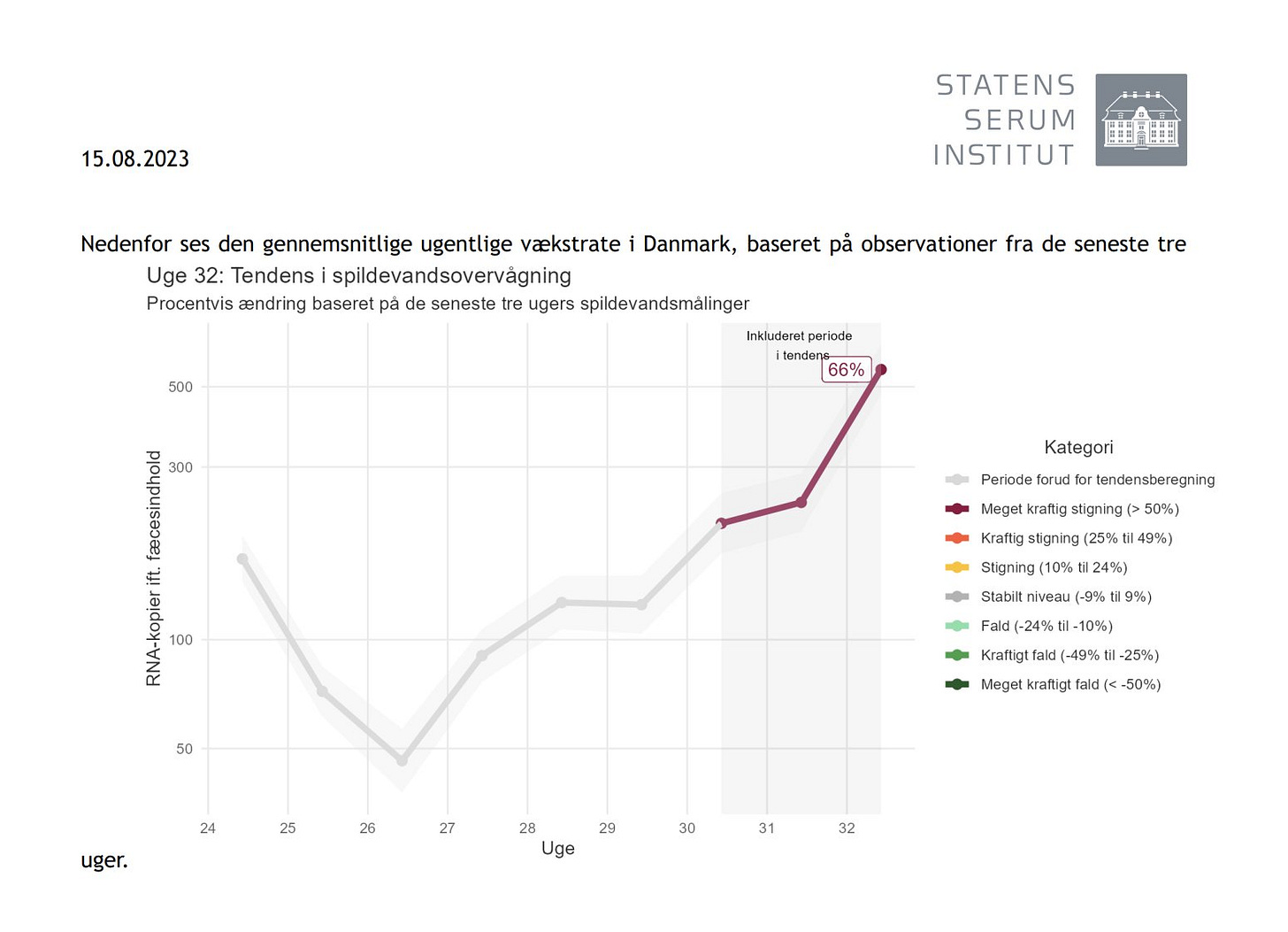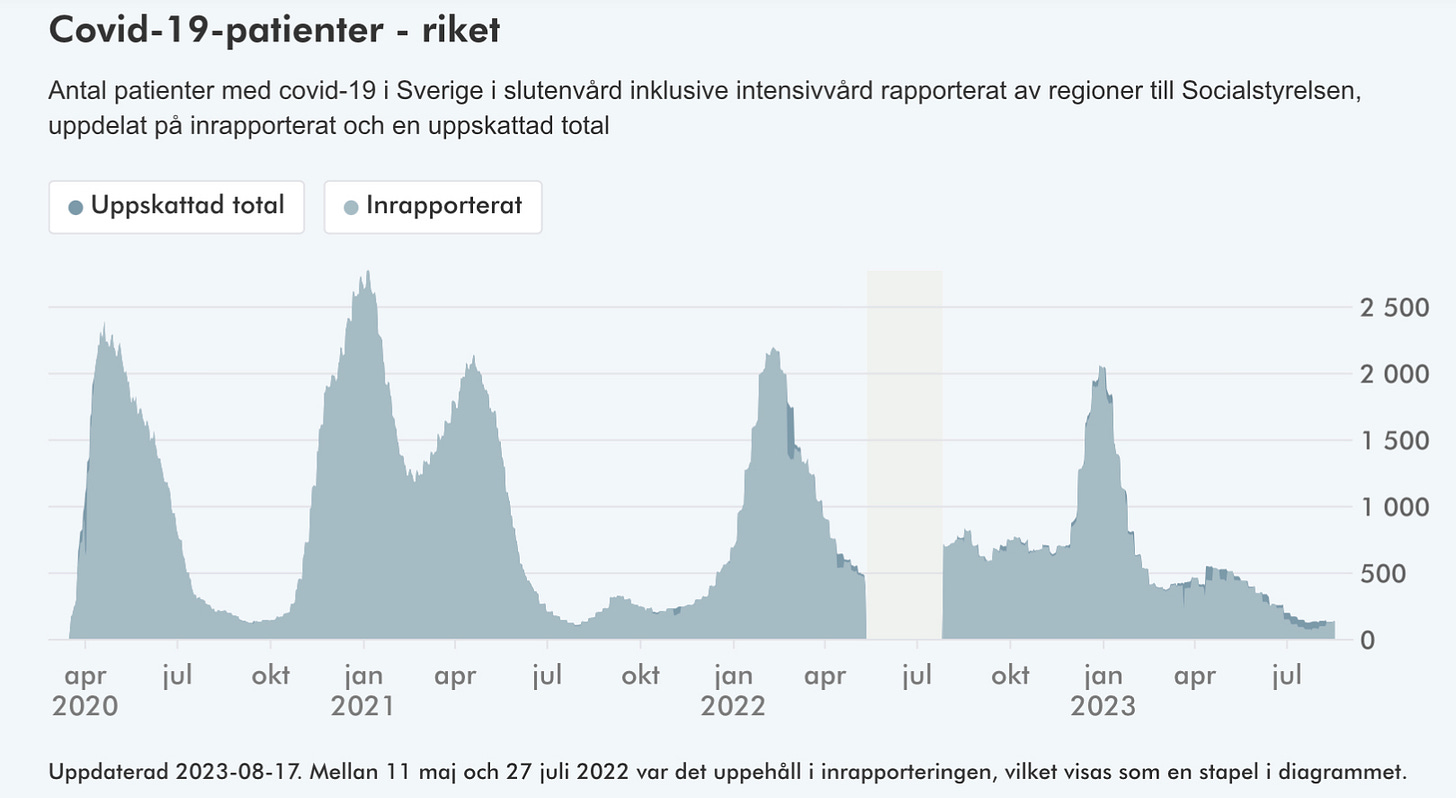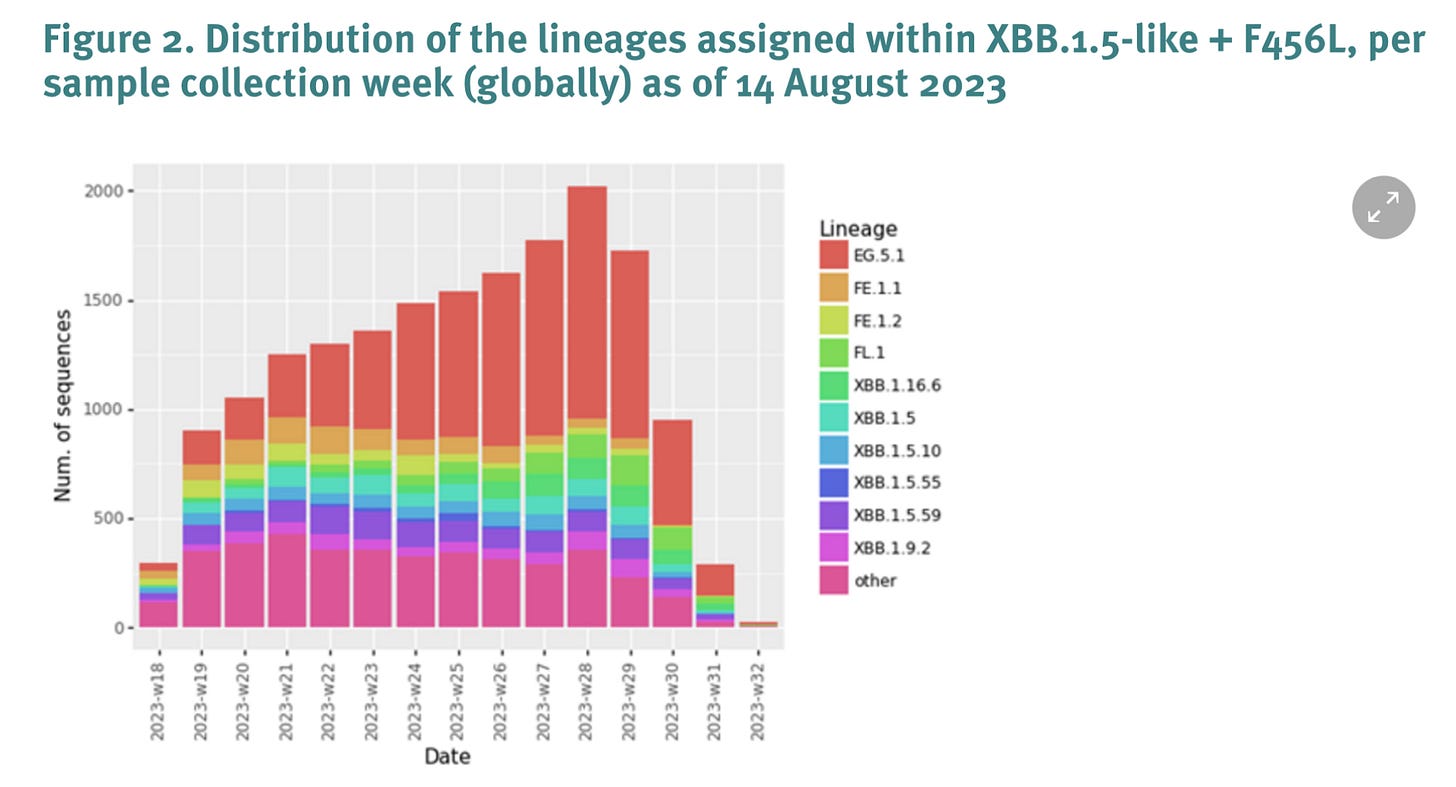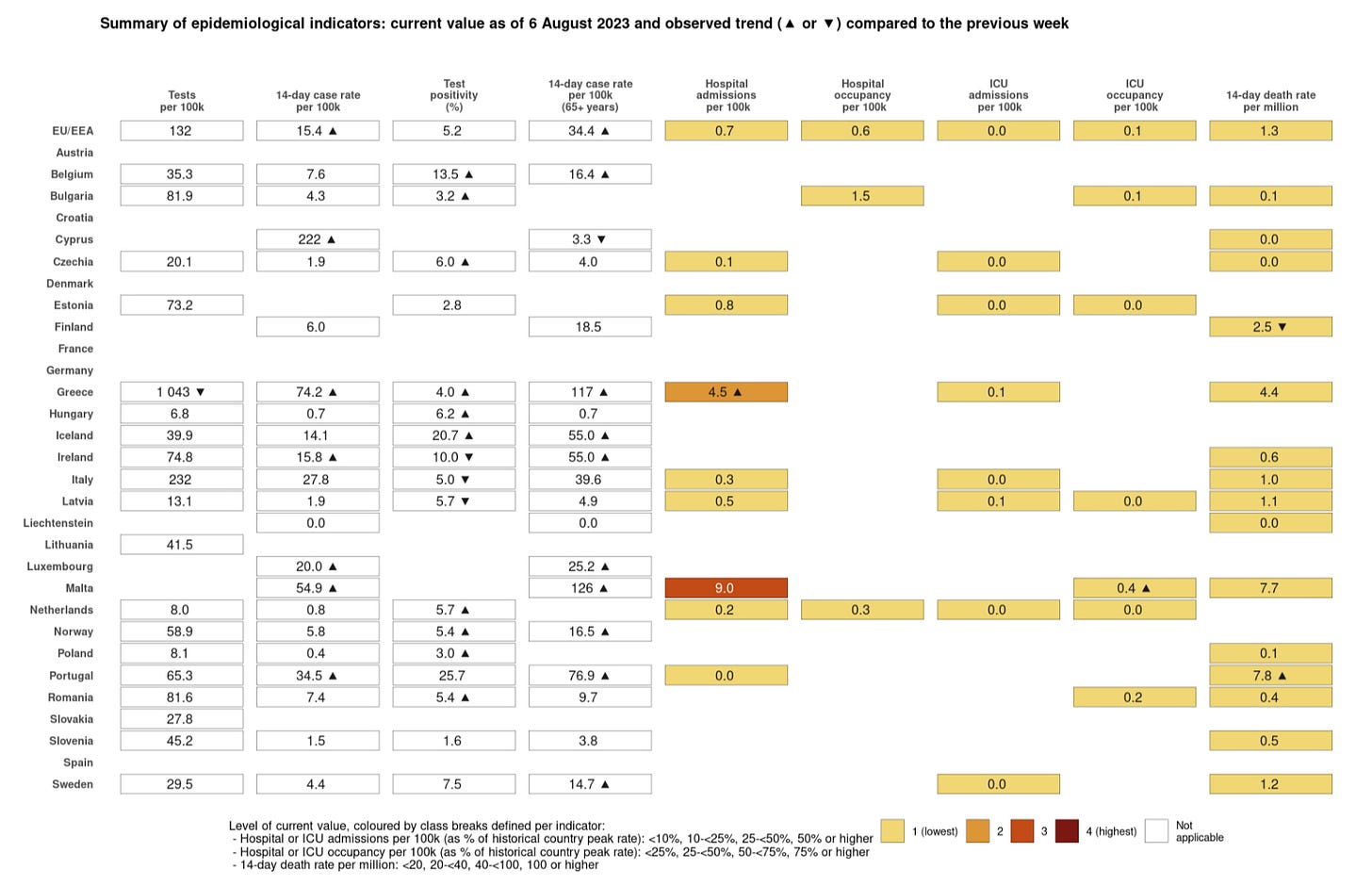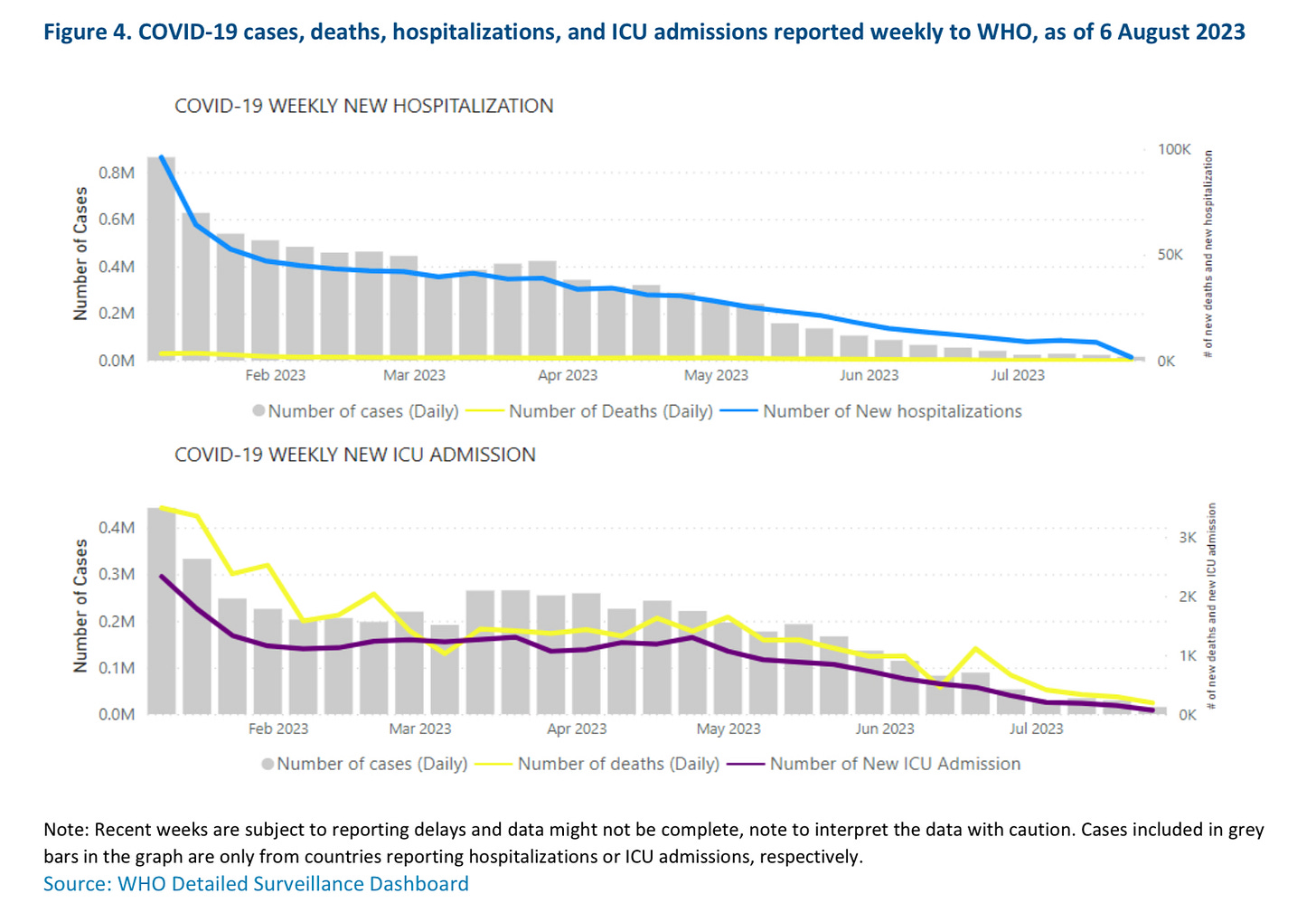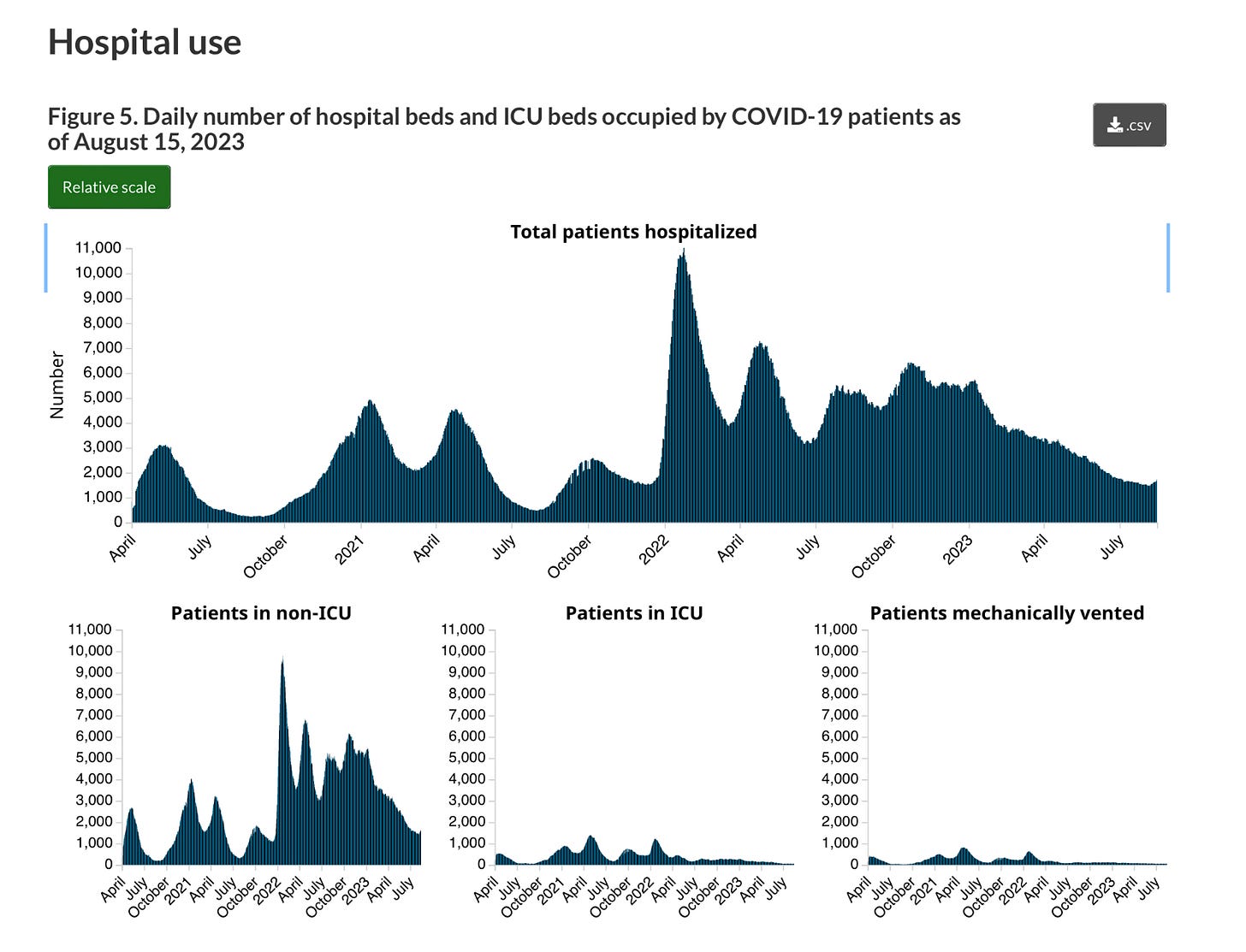🦠COVID🦠
COVID infections are increasing across the globe as new variants emerge. The new infection wave comes at an awkward time. Generally, with minimal infection activity over the summer and more than a few months since the spring booster dose campaigns, population level immune protection is not at optimal levels. And fall booster dose campaigns are at lease a month or more away from beginning.
How immune evasive these new variants are and especially IF any of them prove to cause more severe infections (so far there is no evidence they do) will determine the size of the infection wave that is currently building.
You will find more information about the developing situation below.
🇩🇰
For the first time in months Denmark’s Statens Serum Institute is tabling something of an update on the COVID situation, and it’s not promising. The institute warns that coronavirus infections are rising in Denmark. In its assessment, it cites growing infection numbers, increasing rates of virus activity in wastewater surveillance, a rising positivity percentage, and an increase in infection-related hospital admissions. The SSI emphasizes that the increases are from “a low level.” Although it also bears mentioning that with barely any significant testing the ‘true’ infection situation is unknown.
“A similar increase has also been reported from several other European countries, including Norway and Sweden.”
The institute says the new EG.5 variant, which seems to be driving infection numbers up elsewhere, may be contributing factor to increasing coronavirus activity in Denmark. Last week, the World Health Organization designated EG.5 as a ‘variant of interest’ joining XBB.1.5 and XBB.1.16 as the three most concerning strains in the world today.
The SSI confirmed on Thursday that it has recorded 63 infections of the EG.5 variant so far. It says as of two weeks ago the new strain accounted for 35% of all confirmed infections, a 15% increase from the week previous. Again keep in mind these numbers are almost certainly underreported.
The institute is stressing that there is no evidence yet that EG.5 causes more severe infections than the other coronavirus strains currently in circulation.
-
The Staten Serum Institute also confirmed on Thursday another new sub-variant is active in Denmark.
“A new Omicron BA.2 subvariant has been observed. The variant was seen in one case in Israel, and three cases in Denmark. None of the Danish cases are immunocompromised, and there is no epidemiological link between the cases. There is no indication that the new variant causes more severe illness.”
As of Thursday, a fifth case has been confirmed in the U.S. state of Michigan.
The new variant has been designated by the World Health Organization as BA.2.86. It has caused some concern among epidemiologists for the sheer number of mutations in the strain. As with all new variants the questions vastly outnumber the answers at the moment.
The Statens Serum Institute says it is busy studying the new variant in its laboratories to get a better handle on what if any threat it might pose.
In light of these recent developments, WHO COVID Technical Lead Maria Van Kerkhove is again urging countries, who so far have turned a deaf ear, to ramp up virus surveillance systems.
“COVID is not gone. The virus continues to evolve and more variants will emerge. We need better surveillance to track known and detect new variants. The WHO will analyze and assess each. We have tools to prevent infections, severe disease, and deaths. There is more work to do.”
🇸🇪
In Sweden, COVID hospitalizations (136) have risen slightly (+9) while ICU numbers (4) have dropped (-18).
COVID hospitalizations are also increasing in Sweden’s capital region. In its latest weekly update, Region Stockholm reports 45 infection-related admissions. That is 11 more patients than the week before. There is just one infected person in intensive care.
🇪🇺
The European Centre for Disease Prevention and Control has designated all variants with the F456L mutation as ‘variants of interest.’ The mutation contributes to an increased ability to slip by immune protections from vaccination and previous infection. It is present in all of the three most serious strains in circulation, XBB.1.5, XBB.1.16, and the newly identified EG.5, as well as a handful of others.
The ECDC is warning people to brace for an infection surge, both in the European Union and outside of it. The agency warns that other contributing factors to another COVID wave are large gatherings during the holiday months and lower levels of immune protection.
“Based on what is observed in countries outside the EU/EEA, it is likely that F456L variants will contribute to increased transmission in the coming weeks. However, it is unlikely that the resultant levels of severe disease will reach those of similar peaks previously observed during the COVID pandemic. It is also unlikely that F456L variants are associated with any increase in infection severity compared to the previously circulating variants, or reduction in vaccine effectiveness against severe disease. However, as for other SARS-CoV-2 variants, older individuals and those with underlying conditions could develop severe symptoms if infected.”
The ECDC is adding its voice to the WHO’s in encouraging countries to amp up COVID surveillance systems including testing. It also says vaccination programs need to be ready to go.
“Adherence to national vaccination schedules is essential to protect people at high risk for severe disease and death. Countries should assess their readiness to identify target groups and conduct timely COVID-19 vaccination campaigns. In addition, communication campaigns aimed at the public and healthcare professionals are deemed necessary to reach high-risk groups and inform them of the importance to stay up to date with vaccination.”
-
The latest snapshot of the COVID situation across Europe shows infection activity is rising across all age groups according to the European Centre for Disease Prevention and Control.
In the latest weekly reporting period ending August 6, the ECDC warns that while coronavirus activity is increasing the picture is particularly fuzzy due to summer holidays and the impact that has on data gathering and reporting. It says the numbers in this latest update should be taken with caution.
Five countries (Greece, Ireland, Luxembourg, Malta, and Portugal) are seeing infection activity increase across all age groups. One (Cyprus) is reporting increasing coronavirus cases but just among those under 65. Conversely, four countries (Belgium, Iceland, Norway, and Sweden) are seeing COVID cases rise but just among vulnerable seniors.
Greece is also reporting an increase in infection-related hospitalizations. While intensive care numbers are rising in Malta. Romania is the only country to report an increase in pandemic deaths.
Six countries, including some of the largest in Europe, (Austria, Croatia, Denmark, France, Germany, and Spain) haven’t reported any COVID data to the ECDC.
A mere ten European countries met the ludicrously low threshold of submitting at least 10 sequenced positive test results over a two-week period. Based on that extremely narrow window XBB.1.5 remains the dominant strain in Europe. This should be taken with a massive grain of salt.
🌎 🦠
In the latest global update, the World Health Organization says in the latest 28 day reporting period ending August 6, there were nearly 1.5 million new infections around the world (+80%) while over 2,500 more lives were lost (-57%).
There were just 25 countries reporting hospital data. Of those, there were 36,533 infection-related admissions (-27%). Among the 23 countries reporting ICU numbers there were 580 new intensive care patients (-68%).
The United States saw the most new COVID hospitalizations with 27,693 new admissions (+11%). It was followed by Greece with 1,051 new patients (+8%).
Latvia (+67%), Ireland (+67%), and Greece (+21%) all saw increases in intensive care patients.
South Korea remains a COVID hot spot with the most intense infection activity of any country on earth at the moment. It reported 1,278,065 new infections (+243%) with 340 more lives lost (+91%).
Other global hot spots include Honduras, Jamaica, the Dominican Republic, San Marino, Iceland, Ireland, and the United Kingdom. All of those countries reported increases of 20% or more in the number of coronavirus cases.
🇬🇧
COVID hospitalizations are heading back upward in the United Kingdom. The COVID Actuaries Response Group says infection-related admissions rose 19% in the last week. Numbers were up 26% in the week previous. Hospitalizations rose in every region of England with the largest jump in North West (+48%).
Intensive care occupancy also rose by 21%.
The coronavirus reinfection rate, or R0, is an estimated 1.12 in the UK. Anything over 1 indicates degrees of a growing epidemic.
🇨🇦
In Canada, COVID hospitalizations are also rising again. The total number of hospital beds in use by a pandemic patient rose to 1,732 in the last week, an increase of 177. General admissions increased by 173 to 1,671. While the number of intensive care patients rose from 48 to 52. Severely infected people requiring a ventilator also crept upward from 52 to 55.




